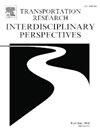Charting the landscape of rail human factors and automation: A systematic scoping review
IF 3.9
Q2 TRANSPORTATION
Transportation Research Interdisciplinary Perspectives
Pub Date : 2025-02-12
DOI:10.1016/j.trip.2025.101350
引用次数: 0
Abstract
As railway systems in Europe move towards increased integration and automation, understanding the human factors implications is critical. This systematic scoping review examines research on human factors and automation in railways, with a focus on studies involving railway operators such as train drivers and traffic controllers. Following PRISMA-ScR (Preferred Reporting Items for Systematic Reviews and Meta-Analyses extension for Scoping Reviews) guidelines, we explored six databases and solicited expert recommendations, identifying 65 relevant studies published since 2000. Studies were categorized based on methodology and analysed to identify key themes, measures, and research priorities. The review revealed five main types of studies: empirical simulations (32%), non-simulation studies (25%), literature reviews (8%), analysis of existing technologies (31%), and new technologies (20%). Key research priorities included assessing the impact of automation on operator performance, workload, and situational awareness. Human-in-the-loop simulations emerged as a crucial method for evaluating new automated systems. Nevertheless, gaps emerged, e.g., studies focus mainly on drivers, use small sample sizes, and pay little attention to operators’ communications. Moreover, researchers seem to have scattered goals and assessment practices, with limited cross-contamination among different centres and across domains. If the goal is to integrate the European rail network, policymakers should push not only for technological integration but also for cultural and methodological integration, in which human factors can play a pivotal role.
求助全文
约1分钟内获得全文
求助全文
来源期刊

Transportation Research Interdisciplinary Perspectives
Engineering-Automotive Engineering
CiteScore
12.90
自引率
0.00%
发文量
185
审稿时长
22 weeks
 求助内容:
求助内容: 应助结果提醒方式:
应助结果提醒方式:


